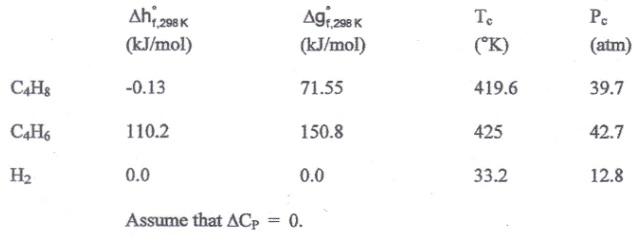The catalytic dehydrogenation of 1-butene to 1,3-butadiene,
C4H8(g) = C4H6(g)+H2(g)
is carried out at 900 K and 1 atm.
a) Show that C4H8, C4H6 and H2 can be considered ideal gases at 900 K and 1 atm.
b) If the inlet stream to the reactor contains 10 mol of steam per mol of butene (steam is used as a diluent gas), determine the extent of reaction at equilibrium.
c) Determine the extent of reaction in the absence of steam.
d) How would an increase in temperature or pressure affect the equilibrium composition?
Data:
